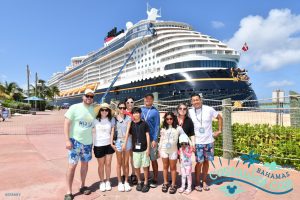For a hotel, ROAS (Return on Ad Spend) isn’t just a campaign metric; it’s an indicator of each customer’s long-term profitability. This is where Lifecycle Marketing (Customer Lifecycle Marketing) becomes a fundamental pillar. This holistic strategy not only elevates your ROAS but transforms occasional guests into loyal customers who not only return but also recommend your hotel.
Understanding the Hotel Customer Lifecycle
The customer lifecycle is the complete journey an individual takes from the moment they become aware of your hotel until they become a brand advocate. Understanding and optimizing each stage is crucial for maximizing the value of each guest and, therefore, your ROAS.
The key stages of the customer lifecycle in the hotel industry typically include:
- Awareness: The potential guest discovers your hotel. This can be through a Google search, a social media ad, a recommendation, or a blog article.
- Consideration: The potential guest researches your hotel, compares prices, reads reviews, explores your website, and considers your offers.
- Booking/Conversion: The guest decides to book a stay at your hotel.
- Pre-Stay: From booking until check-in. This is an opportunity to build anticipation, confirm details, and offer upsells.
- In-Stay: The guest’s experience at your hotel. The quality of service and facilities are crucial for satisfaction.
- Post-Stay: After check-out. A key moment to request reviews, express gratitude, and encourage repeat business.
- Loyalty/Advocacy: The guest becomes a returning customer and a promoter of your hotel.
Traditionally, hotel marketing has focused heavily on the first three stages (awareness, consideration, booking) to acquire new customers. However, the true impact on ROAS and profitability comes from managing the later stages: pre-stay, in-stay, post-stay, and especially, loyalty.
How Lifecycle Marketing Directly Impacts Your ROAS
ROAS is calculated as (Revenue Generated by Advertising / Cost of Advertising). By optimizing each stage of the customer lifecycle, you directly influence both sides of this equation.
1. ROAS Optimization in Acquisition (Awareness and Consideration)
Although lifecycle marketing focuses on the entire journey, it doesn’t neglect acquisition; instead, it makes it more efficient.
- Smarter Segmentation: By understanding the profiles of your most valuable guests (extracted from your CRM), you can use this information to create Lookalike Audiences in Meta Ads or Customer Match in Google Ads. This ensures your ads reach people with a high probability of becoming profitable customers, improving initial ROAS by reducing Cost Per Acquisition (CPA).
- Personalized Messaging: Even for new users, if your data system allows you to identify their general interests (e.g., luxury travel, family getaways), you can show them more relevant ads from the start, increasing CTR and conversion.
- Targeted Remarketing: For those who showed interest but didn’t book, you can launch highly segmented remarketing campaigns with specific offers or messages, closing the loop and improving ROAS by recovering bookings that would otherwise be lost.
2. Increasing Booking Value (Pre-Stay and In-Stay)
Once the booking is made, lifecycle marketing doesn’t stop; it focuses on increasing the value of that booking.
- Up-selling and Cross-selling Strategies:
- Pre-Stay: Send automated emails offering room upgrades at a special price, spa packages, romantic dinners, airport transfers, or local tours. Guests are already committed and more likely to spend more.
- In-Stay: Use your PMS or a hotel app to offer additional services during the stay (room service, laundry, bike rentals).
- Pre-Stay: Send automated emails offering room upgrades at a special price, spa packages, romantic dinners, airport transfers, or local tours. Guests are already committed and more likely to spend more.
- Enhanced Guest Experience: An exceptional stay translates into fewer complaints, better reviews, and, crucially, a higher likelihood of repeat bookings. This reduces future marketing costs to acquire the same customer.
3. Fostering Repeat Business (Post-Stay and Loyalty)
This is where ROAS skyrockets, as the acquisition cost for a returning customer is drastically lower.
- Satisfaction Surveys and Review Requests: A post-stay thank-you email with an invitation to leave a review on Google or TripAdvisor is vital. Positive reviews improve your local SEO and new customer trust, positively impacting future conversion rates (and thus, acquisition ROAS).
- Loyalty Programs: Create points programs, exclusive discounts for members, or special benefits for returning customers. Actively communicate these programs.
- Reactivation Campaigns: Segment guests who haven’t returned within a certain period and send them personalized offers to incentivize them to come back.
- Personalized Communication Based on CRM Data:
- “Happy wedding anniversary, [Customer Name]! Come celebrate with us again at [Hotel Name] with a special package.”
- “Remember your stay on [Date]? We miss you. Try our new suite with views.”
- “You liked [Service/Amenity] on your last visit. Here’s a 10% discount on your next booking.”
- “Happy wedding anniversary, [Customer Name]! Come celebrate with us again at [Hotel Name] with a special package.”
- Brand Advocates: Encourage your most loyal customers to share their experiences on social media or refer friends and family, generating valuable free word-of-mouth marketing.
Implementing Lifecycle Marketing for Your Hotel: Tools and Strategies
To implement effective lifecycle marketing, you need the right tools and a well-defined strategy.
1. Your CRM: The Heart of Your Strategy
- Data Centralization: A robust CRM is essential. It must store all guest information: contact details, booking history, preferences, interactions, complaints, reviews, and Lifetime Value (LTV).
- Integration: Ensure your CRM integrates with your PMS, booking engine, email marketing platforms, and, crucially, with Google Ads and Meta Ads. This allows for a bidirectional data flow that fuels personalization.
2. Marketing Automation
- Automated Email Sequences: Set up workflows based on guest behavior:
- Booking confirmation: With details, upsell options.
- Pre-arrival: Reminders, hotel information, online check-in.
- Welcome: At check-in.
- Check-out: Thank you, review request.
- Reactivation: For guests who haven’t returned in X time.
- Birthdays/Anniversaries: Special offers.
- Booking confirmation: With details, upsell options.
- Personalized Notifications: Use the CRM to send notifications to employees about guest preferences before their arrival (e.g., “Mr. Smith prefers feather pillows”).
3. Personalized Advertising and Advanced Retargeting
- Custom Audiences (Google Ads & Meta Ads): Upload your CRM segments (VIP, inactive, by stay type) to create remarketing audiences.
- Lookalike Audiences: Use your most valuable customers as a base to find new prospects with similar characteristics, improving acquisition quality and ROAS.
- Dynamic Retargeting Ads: If a user visited a specific suite page, show them ads for that suite with a personalized offer.
4. Relevant and Valuable Content
- Blog and Local Guides: Offer useful content about tourist destinations, local events, or restaurant guides. This attracts potential guests in the awareness stage and positions you as an authority.
- Exclusive Content for Loyal Customers: Send newsletters with insider information, pre-release offers, or special events just for members.
5. Continuous Measurement and Multi-Channel Attribution
- Google Analytics 4 (GA4): Configure GA4 to track the entire customer journey, from the first click to repeat booking. Use the Conversion Paths reports and the Data-Driven Attribution Model to understand how each touchpoint contributes to ROAS over time.
- Integrated Dashboards: Create dashboards in tools like Looker Studio (Data Studio) that combine data from your CRM, PMS, Google Ads, Meta Ads, and GA4. This will give you a holistic view of your ROAS and your customers’ LTV by channel.
The Quantifiable Impact on ROAS and Profitability
The impact of Lifecycle Marketing on ROAS is profound:
- Reduced CPA: Acquiring a new customer is much more expensive than retaining an existing one. By fostering repeat business, you drastically reduce the Cost Per Acquisition (CPA) over time. A lower CPA, while maintaining revenue, elevates your ROAS.
- Increased Average Daily Rate (ADR)/Average Revenue Per Booking (ARV): Up-selling and cross-selling strategies pre- and during the stay increase the average spend per guest, directly boosting revenue and, therefore, the numerator of the ROAS.
- Higher Customer Lifetime Value (LTV): Loyal customers generate multiple bookings throughout their lives, and often spend more per stay. High LTV means every dollar invested in marketing pays off much better over time.
- Word-of-Mouth Marketing: Satisfied and loyal customers become advocates for your brand, generating free and high-quality referrals, which is essentially infinite ROAS.
- Data for Future Optimization: Every interaction in the lifecycle generates valuable data that you can use to refine your marketing strategies, from audience segmentation to message personalization, leading to a continuous cycle of ROAS improvement.
Ultimately, Lifecycle Marketing transforms your marketing strategy from a series of transactional campaigns into a relationship-centric approach. By nurturing your guests at every stage, you will not only improve your immediate ROAS but also build a solid base of loyal customers who will ensure the long-term prosperity of your hotel.
Contact us at Digisap, and let’s design together an SEO and digital marketing strategy so your hotel is the first choice, and guests book with you, not the competition.
Click here to schedule your free consultation and take your hotel to the next level





